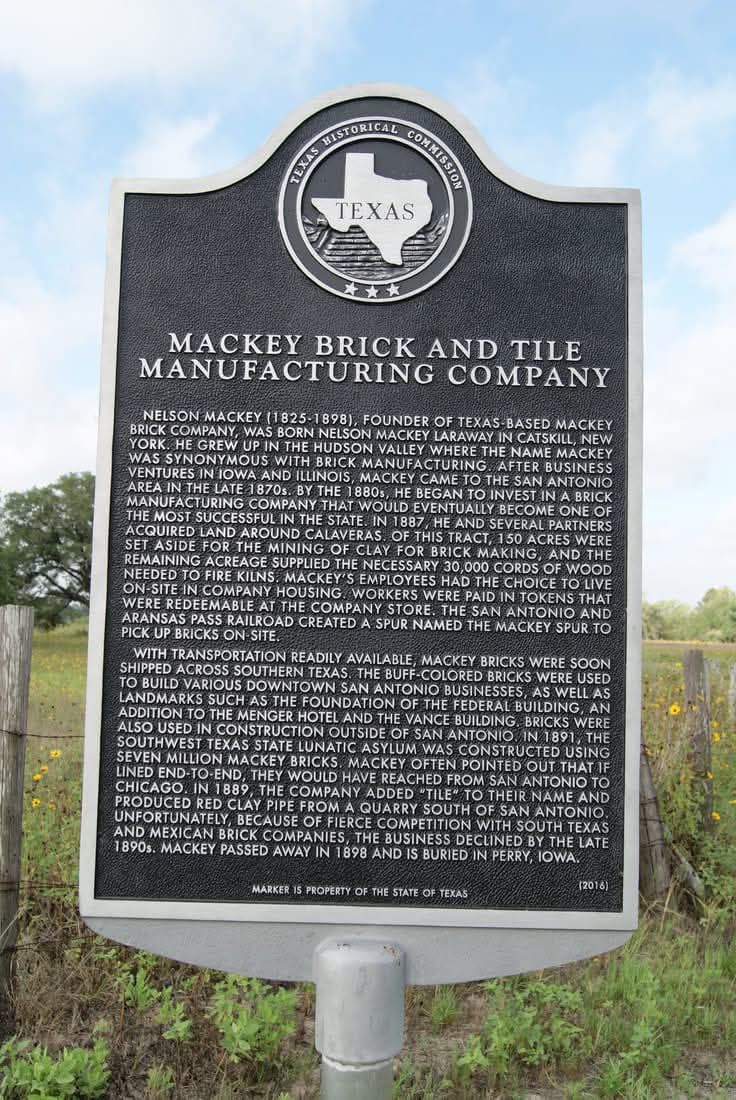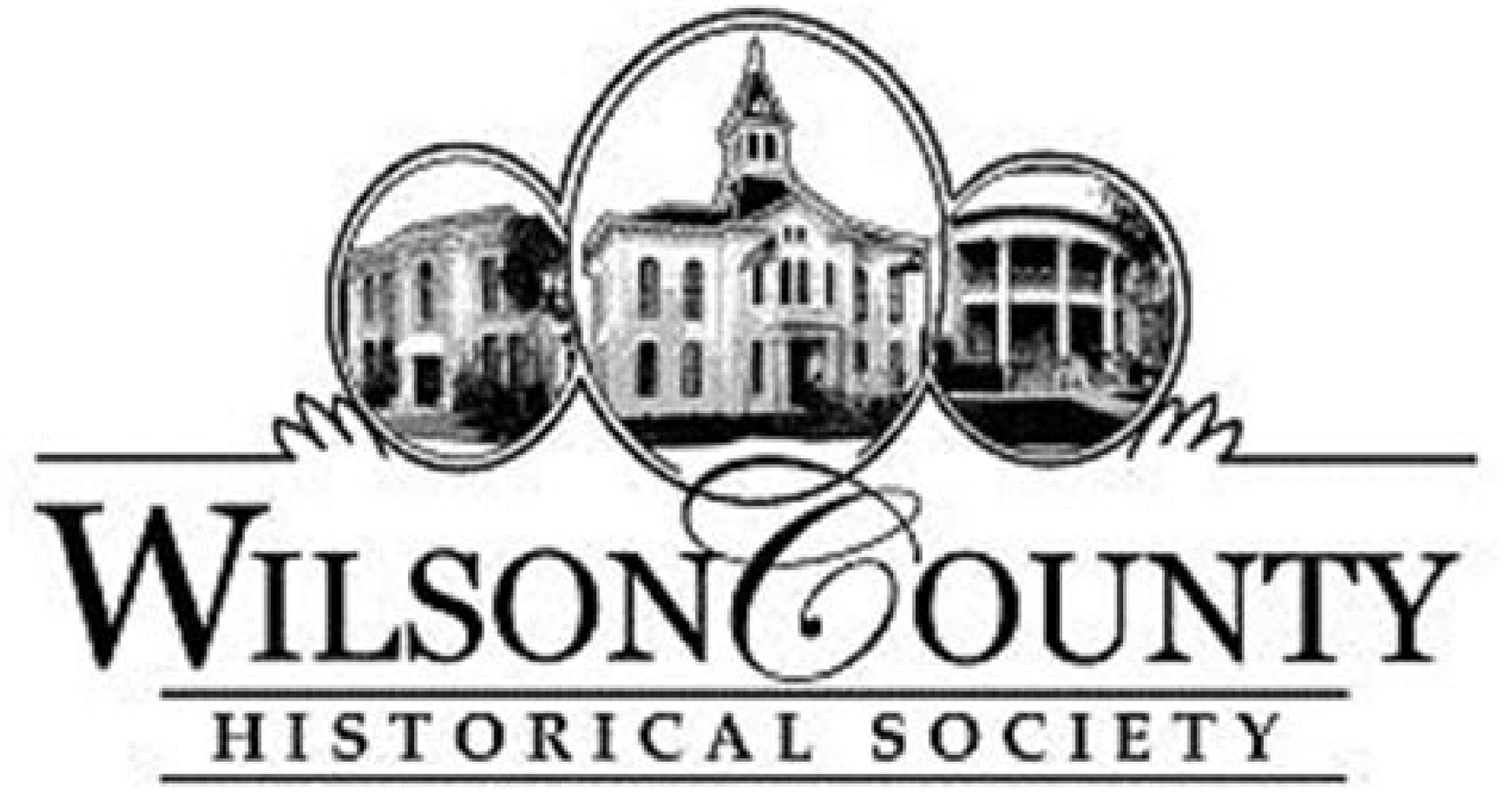by Barbara J. Wood

Calaveras Wilson County Texas
Calaveras Wilson County Texas... thrived as a brick
manufacturing commu-nity from 1887 through 1925. Up to about 1882 or 1885 depending on the source, the name of the c o m m u n i t y was changed from Wright to Calaveras.
manufacturing commu-nity from 1887 through 1925. Up to about 1882 or 1885 depending on the source, the name of the c o m m u n i t y was changed from Wright to Calaveras.
In the late 1880's, the brick of superior quality came from Calaveras County, California. N. Mackey, W.S. Dickey and others in the brick making business knew of the Calaveras County brick. A smart entrepreneur like Mr. Mackey would want his bricks to be known as Calaveras brick. The consensus of the group of current Calaveras residents that meet regularly at Albert Gamez's engine repair shop is that the origin of the name of the community is unknown. However, Jr. Beyer recalled the talk about three skeletons being uncovered in the early years of Calaveras. Then as now the collective wisdom was to leave well enough alone in reference to the skeletons. The belief of the group is that the skeletons had no bearing on the name of the community.
N. Mackey started buying land in and around Calaveras
before the arrival of San Antonio Aransas Pass Railroad in
1886. Jose Cassiani sold land east of the San Antonio River
to Mackey. The land in the area was full of clay deposits suitable for making bricks. In an ongoing study of the area by local historians Allen and Regina Kosub, they state that Mackey recognized the value of the land with its clay deposits, sand, water, and plentiful wood for fuel. The clay around
C a l a v e r a s consisted of a third sand. This made the clay easier to press into bricks but limited the quality. The
University of Texas published a scientific bulletin in 1908 entitled The Clays of Texas by Professor Heinrich Ries. Dr.
Ries did an extensive study of clay deposits throughout Texas. He said the following about Calaveras clay: "owing to its very
sandy characteristics some difficulty has been experienced in getting enough pressure to make a solid brick. While the brick is adapted to the manufacture of common and pressed brick,
it is doubtful it could be used for making any higher grade of
ware." Nonetheless, the making of bricks was an economic boon for Calaveras. The Mackey Brick and Tile Company made millions of brick and operated until 1925. According to Allen Kosub much of the brick was used in the interior of build-ings in San Antonio and shipped throughout the western part of the United States.
The brick factory brought more people and other businesses to the area. Mostly Mexican-Americans worked and lived in and around the factory. Calaveras, like Saspamco, was a company town. The factory had a mercantile store and even issued its own coins redeemable in the store. Two other brick factories existed in the area but little is known about their owners. Other stores, a saloon and a school were built. The community had a post office, a railroad depot and even recorded a plat in the Wilson County Courthouse. In the mid 1900's, the county built a magnificent Warren polygonal bridge over the San Antonio River. The bridge still sits in its original location, a silent reminder of years past. One of the original store buildings also stands. This building was a store, a gas station, a bar owned by the Tackitt family and a restaurant. All of this activity supported the residents of Calaveras. After the closing of the Mackey factory in 1925, the business activity started declining. This included the closing of the depot and post office.
The community survived with many people staying on. Theo
Johns bought the plant manager's house in the early 1900's.
The house has been in the Johns family ever since. Currently, Edwin and Rosie Johns live there. Lifelong resident Albert Gamez runs an engine repair shop attached to his house. His shop is a favorite gathering place for many Calaveras residents. The Floresville Independent School District is building a new elementary school at the corner of FM 775 and County Road 128. Andy McBride and partners are developing a subdivision known as Carrizo Ranch. Jamie Buchhorn has a pool cleaning business and accessory store. Footprints Day Care has just opened across from the new school. The Carvajal family has opened Aurelia's Mexican Café in the old
Calaveras grocery store building. The San Antonio River
Authority has purchased land on the east side of the river to build a public park. The ghosts of the old skeletons may be gone but the spirit of Calaveras lives on. The future is bright for the community.
Written Dec. 13, 1960 by By Col. Jesse Perez for the Wilson County Sesquicentennial 1860-2010 book.
******************
PHOTO:
Location: 1761 County Road 128, Floresville
Marker Text: Nelson Mackey (1825 - 1898) founder of Texas-based Mackey brick Company, was born Nelson Mackie Laraway in Catskill, New York. He grew up in the Hudson Valley where the name Mackey was synonymous with brick manufacturing. After business ventures in Iowa and Illinois, Mackey came to San Antonio area in the late 1870s. By the 1880s, he began to invest in a brick manufacturing company that would eventually become one of the most successful in the state. In 1887, he and several partners acquired land around Calaveras. Of this tract, 150 acres were set aside for the mining of clay for brick making, and the remaining acreage supplied the necessary 30,000 cords of wood needed to fire kilns. Mackey's employees had the choice to live on- site in company housing. Workers were paid in tokens that were redeemable at the company store. San Antonio and Aransas Pass railroad created a spur named the Mackie spur to pick up bricks on site.
With transportation readily available, Mackey bricks were soon shipped across the southern Texas. the buff colored bricks were used to build various downtown San Antonio businesses, as well as landmarks. Such as the foundation of the federal building, an addition to the Merger Hotel and the Vance building. Bricks were also used in construction outside of San Antonio. In 1891, the Southwest Texas State lunatic asylum was constructed using seven million Mackey bricks. Mackey often pointed out that if you lined end-to-end, they would have reached from San Antonio to Chicago. In 1889, the company added "tile" to their name and produced red clay pipe from a quarry south of San Antonio. Unfortunately, because of you fierce competition with south Texas And Mexico brick companies, the business declined by the late 1890s. Mackey passed away in 1898 and is buried in Perry, Iowa. (2016)
